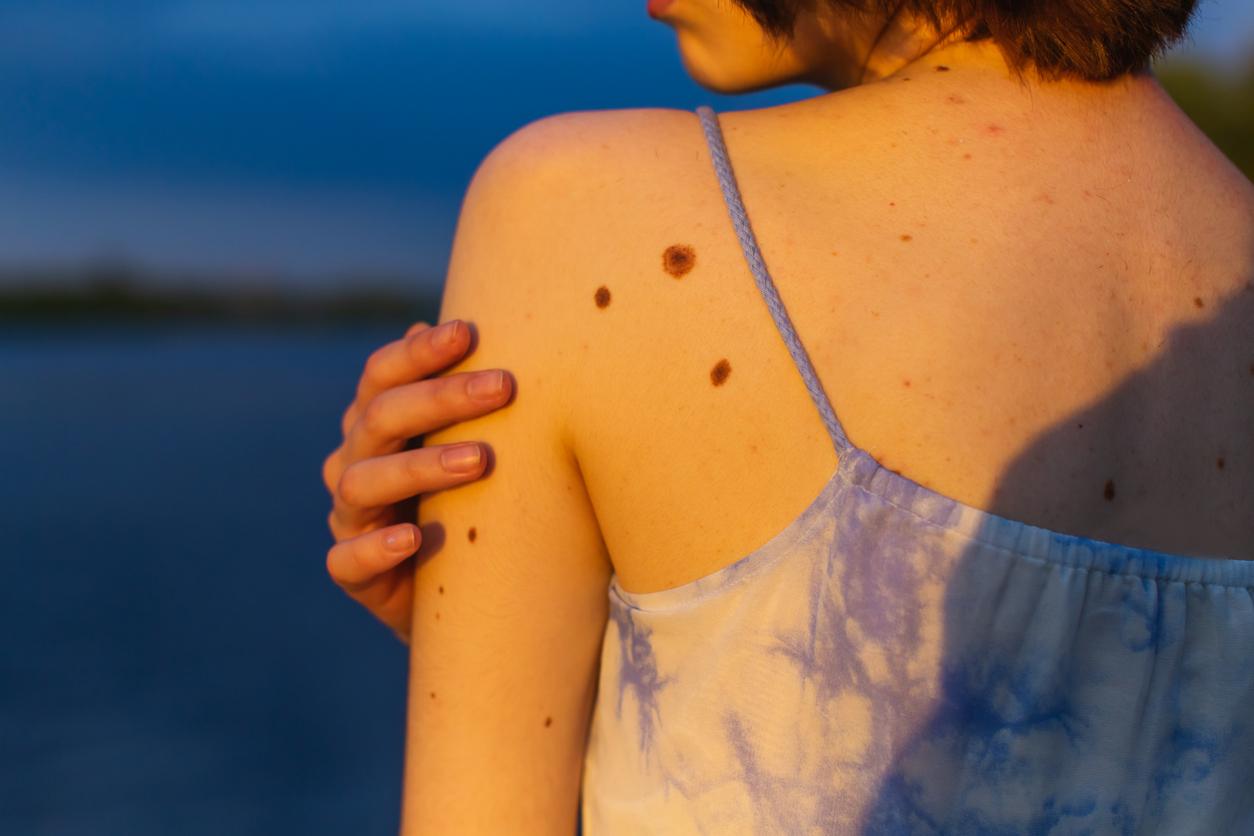
Concerned about a mole? Get peace of mind with online mole checking
Peer reviewed by Dr Colin Tidy, MRCGPAuthored by Thomas Andrew Porteus, MBCSOriginally published 13 Oct 2025
Meets Patient’s editorial guidelines
- DownloadDownload
- Share
- Language
- Discussion
Many of us have moles - small, often harmless marks on the skin that may change slowly over time. But sometimes, a new mole or changes in an existing one can cause worry. While most changes are harmless, it’s important to know when to get a professional opinion, as early detection is key in spotting skin cancer.
In this article:
Continue reading below
Why mole checking matters
Skin cancer is one of the most common cancers in the UK. Caught early, it is highly treatable but delays in diagnosis can make treatment more complicated. This is why doctors recommend keeping an eye on your moles and seeking advice if you notice anything unusual.
The ABCDE rule is often used to help spot suspicious changes:
A - Asymmetry: one half of the mole doesn’t match the other.
B - Border: edges look irregular or blurred.
C - Colour: uneven colouring, with different shades of brown, black, or red.
D - Diameter: larger than 6 mm across.
E - Evolving: any noticeable change in size, shape or colour.
If you notice one or more of these signs, it’s worth getting your mole checked by a medical professional.
A modern, convenient way to get checked
Traditionally, mole checking means booking an appointment with your GP and potentially waiting for a referral to a specialist. But today, new digital services mean you can get peace of mind more quickly.
The Evergreen mole-checking service allows you to submit photos of a mole from the comfort of your own home, along with a short questionnaire. A dermatologist then reviews your submission and provides feedback - usually within one working day.
This approach doesn’t replace face-to-face care where it’s needed, but it can provide fast reassurance or an early warning if further checks are required.
Continue reading below
Try the Evergreen mole-checking service
Sponsored
When to see your GP immediately
While online services are convenient, there are situations where you should contact your GP without delay. These include:
A rapidly growing or changing mole.
A mole that bleeds, crusts, or becomes painful.
Multiple moles changing at the same time.
A new mole appearing after the age of 40.
Your GP may refer you to a specialist (dermatologist) for further tests if needed.
Continue reading below
Takeaway
Checking your moles regularly is one of the simplest ways to look after your skin health. Digital tools like the Evergreen mole-checking service can provide quick reassurance, but they should always be seen as part of a wider approach to staying on top of your health. If in doubt, speak to a doctor.
Patient picks for Moles

Skin, nail and hair health
Whole body 3D mole mapping: the future of skin health?
Noticing changes in your moles is one of the best defences against skin cancer. But if you're someone who has moles in different places, it can be hard to keep track. Mole mapping is a way to look out for changes over time. The most technologically advanced form is whole body 3D imaging. Here's what you need to know.
by Amberley Davis

Skin, nail and hair health
When to worry about a mole
Generally, moles are harmless features of your skin, which rarely cause any issues. But in some cases, UV exposure from the sun can cause a mole to change shape, size or colour and become cancerous. We explore what you need to look out for.
by Amberley Davis
Continue reading below
Article history
The information on this page is peer reviewed by qualified clinicians.
Next review due: 13 Oct 2028
13 Oct 2025 | Originally published
Authored by:
Thomas Andrew Porteus, MBCSPeer reviewed by
Dr Colin Tidy, MRCGP

Ask, share, connect.
Browse discussions, ask questions, and share experiences across hundreds of health topics.

Feeling unwell?
Assess your symptoms online for free
Sign up to the Patient newsletter
Your weekly dose of clear, trustworthy health advice - written to help you feel informed, confident and in control.
By subscribing you accept our Privacy Policy. You can unsubscribe at any time. We never sell your data.
